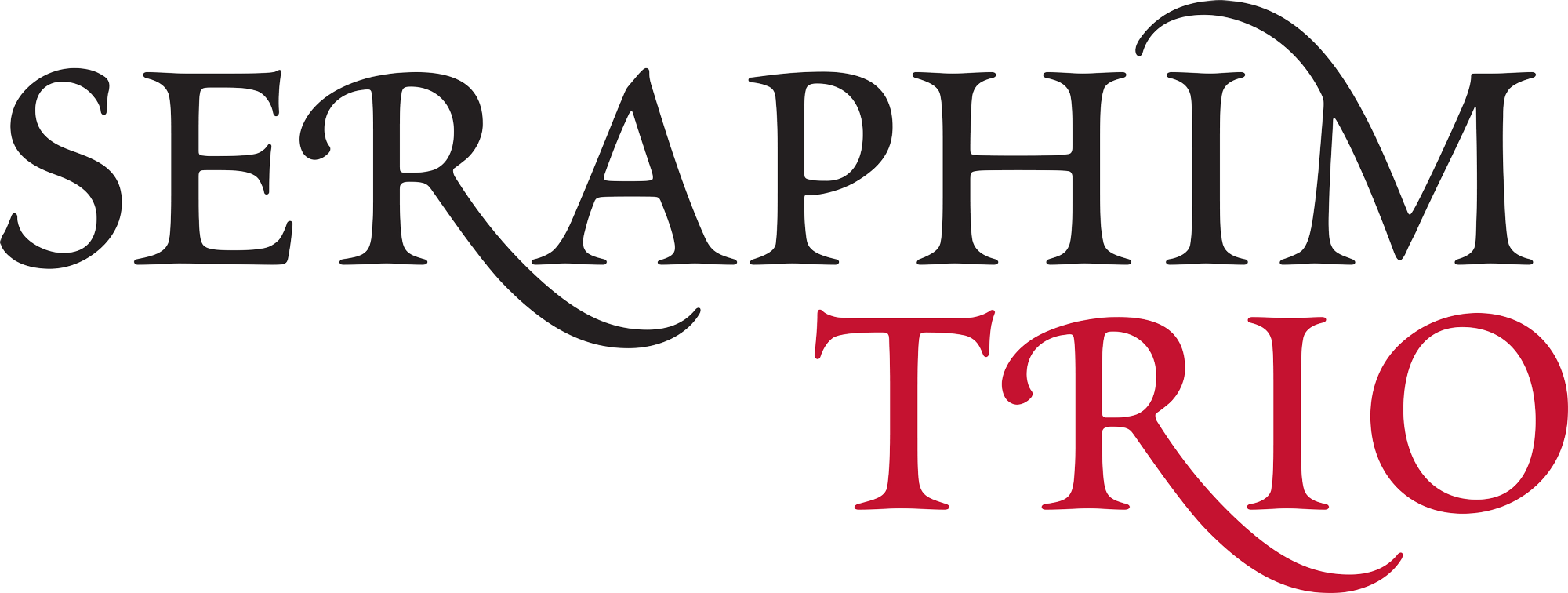Recordings
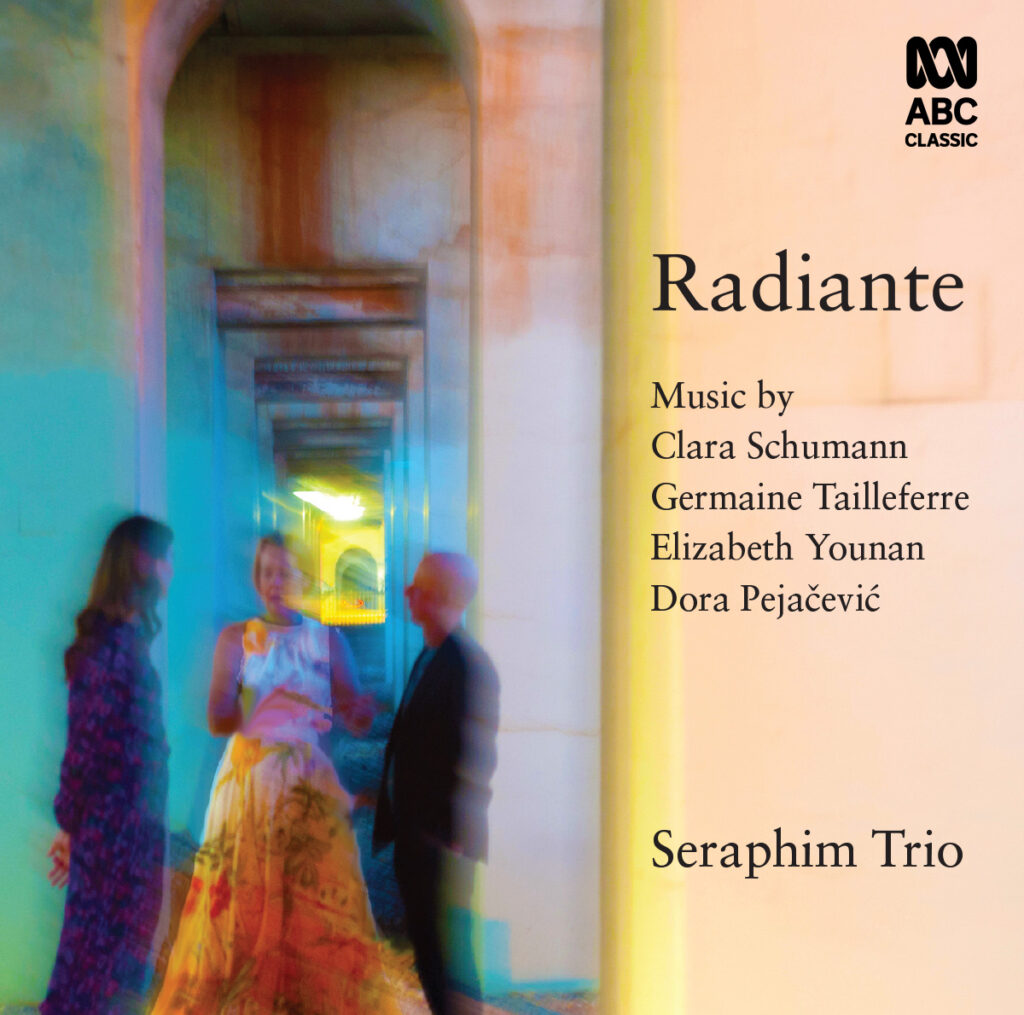
Radiante
Seraphim Trio with Stephen King (viola)
Seraphim Trio’s new album Radiante, celebrating the music of female composers across 160 years of history, right up to the present day.
The album presents key works by four inspiring women: Germaine Tailleferre, the only female member of the groundbreaking French composers circle ‘Les Six’; Clara Schumann, who sidelined her own creative talent to make room for that of her husband Robert Schumann; the Croatian countess Dora Pejačević, who turned her back on a life of privilege to dedicate herself to music; and a world premiere from rising Australian star Elizabeth Younan.
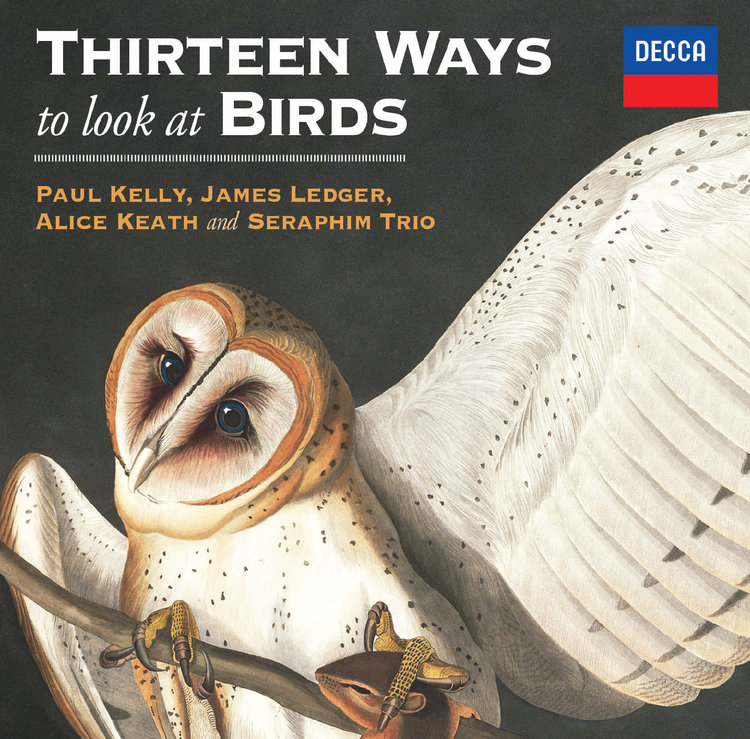
Thirteen Ways to look at Birds
Paul Kelly, James Ledger, Alice Keath and Seraphim Trio
Birds have fascinated poets for centuries, not just for their song and flight but as symbols: of hope, freedom, love, communication, peace, luck good and bad, and migration. And what better way to honour them than by sending songs out into the air?
In a new song cycle stemmed from an idea by Anna Goldsworthy, Australian music legend Paul Kelly and leading Australian composer James Ledger have written thirteen new songs and soundscapes inspired by birds. Using the words of John Keats, Thomas Hardy, Emily Dickinson, Judith Wright, Gerard Manley Hopkins, Gwen Harwood, A.D. Hope and others, each poem is its own world – delicate and intimate at times, colossal and soaring at others, with all states in between.
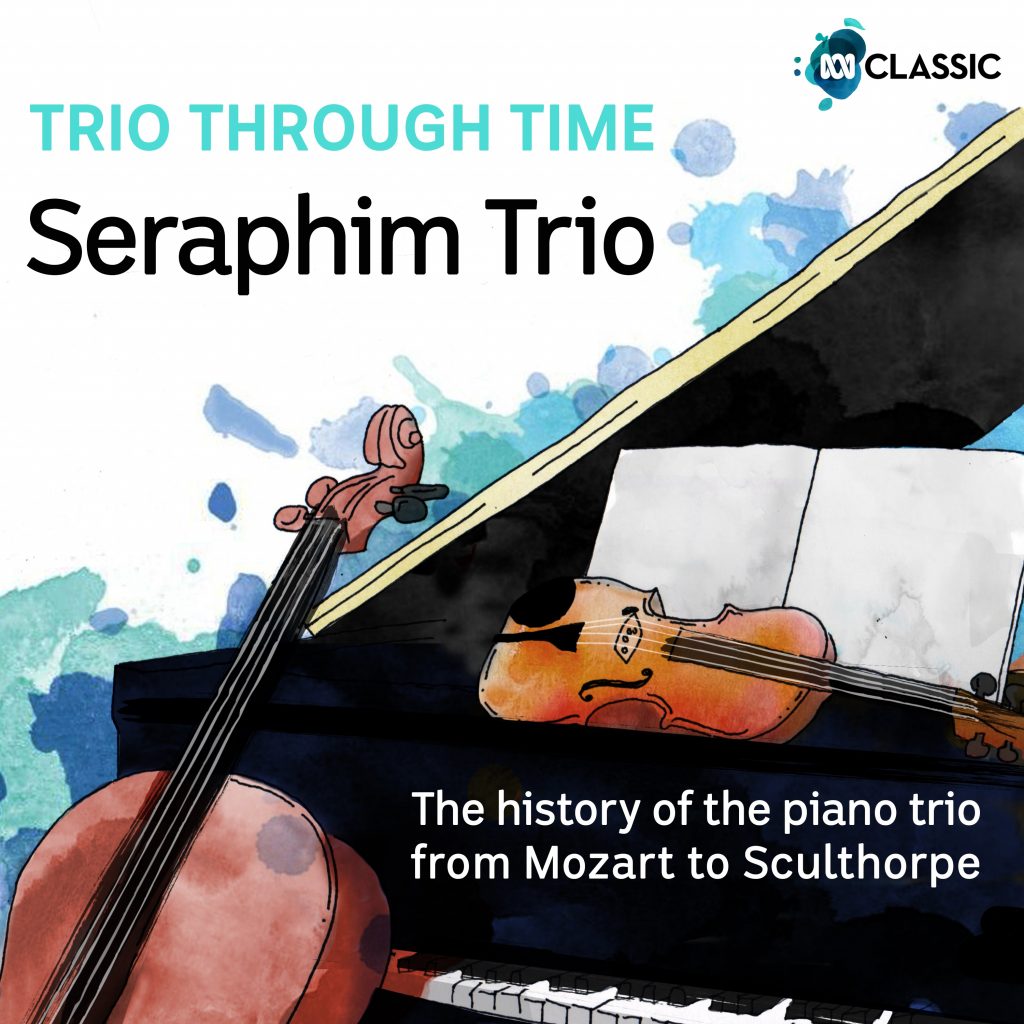
Trio Through Time
Seraphim Trio
Trio Through Time features 12 piano trios, from Mozart, Beethoven and Haydn to Shostakovich and Sculthorpe. The trio was often used to reflect the most personal thoughts and musical experimentation of these composers, and this series explores the development of the form, as well as insights into the composers and the cultures in which they lived.
“The trios of Haydn and Mozart speak to the values of the Enlightenment — good manners and polite conversation — while the trios of Schubert and Brahms threaten to explode out of the drawing room, both in their sound world and their levels of personal disclosure, heralding a new age of individualism,” says Anna Goldsworthy.
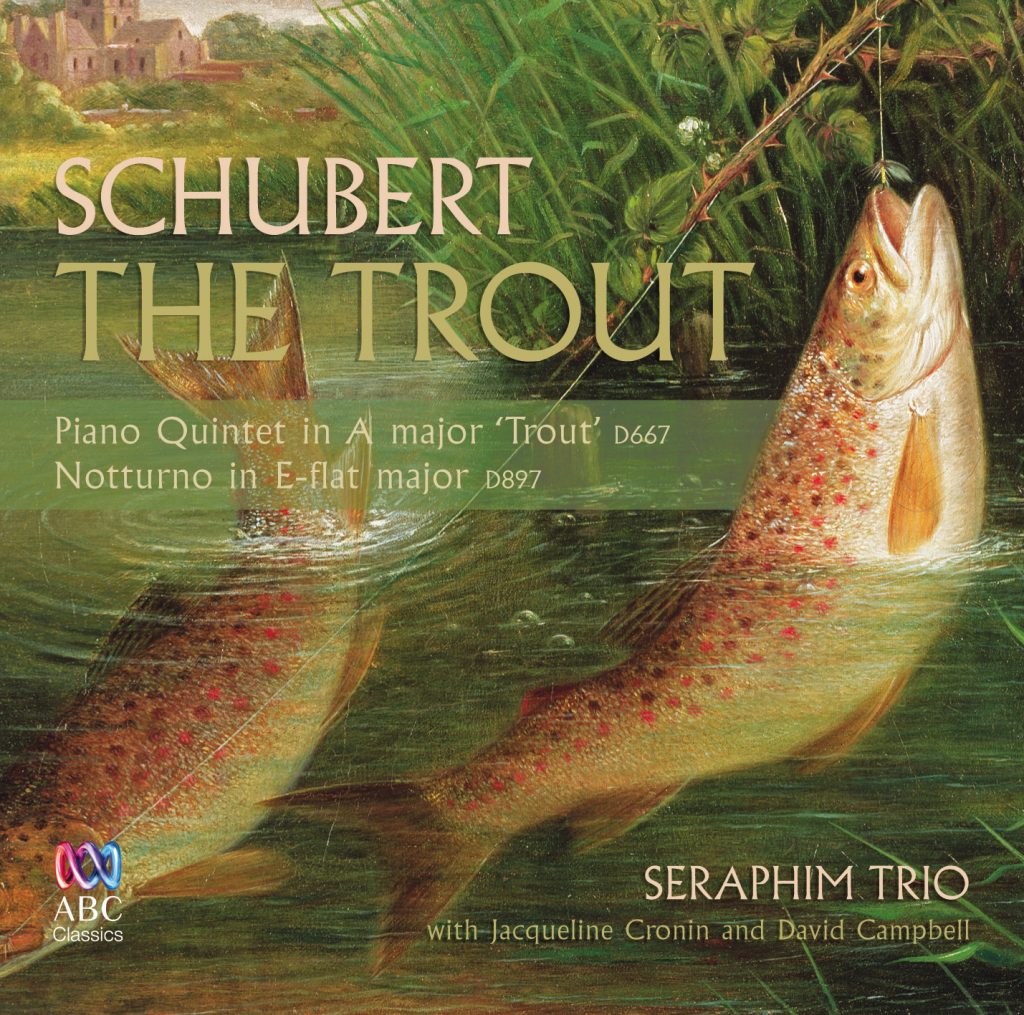
Schubert: The Trout Quintet
Seraphim Trio with Jacqueline Cronin
and David Campbell
ABC Classics presents Schubert’s much-loved ‘Trout’ Quintet, one of the most popular chamber music pieces of all time.
Schubert, inspired by the surroundings of a summer trip in the Austrian Alps, used material from his earlier song ‘Die Forelle’ (’The Trout’, D550) as the basis for this Quintet. Composed in five movements, the ‘Trout’ is unusual in its scoring: rather than the usual piano quintet line-up of piano and string quartet, the quintet is written for piano, violin, viola, cello and double bass. The resulting transparency of texture and infectious melodies instantly bring to mind the calm serenity of summer mountain air and the ‘darting’ piano accompaniment in the fourth movement vividly conjures up that wriggling trout!
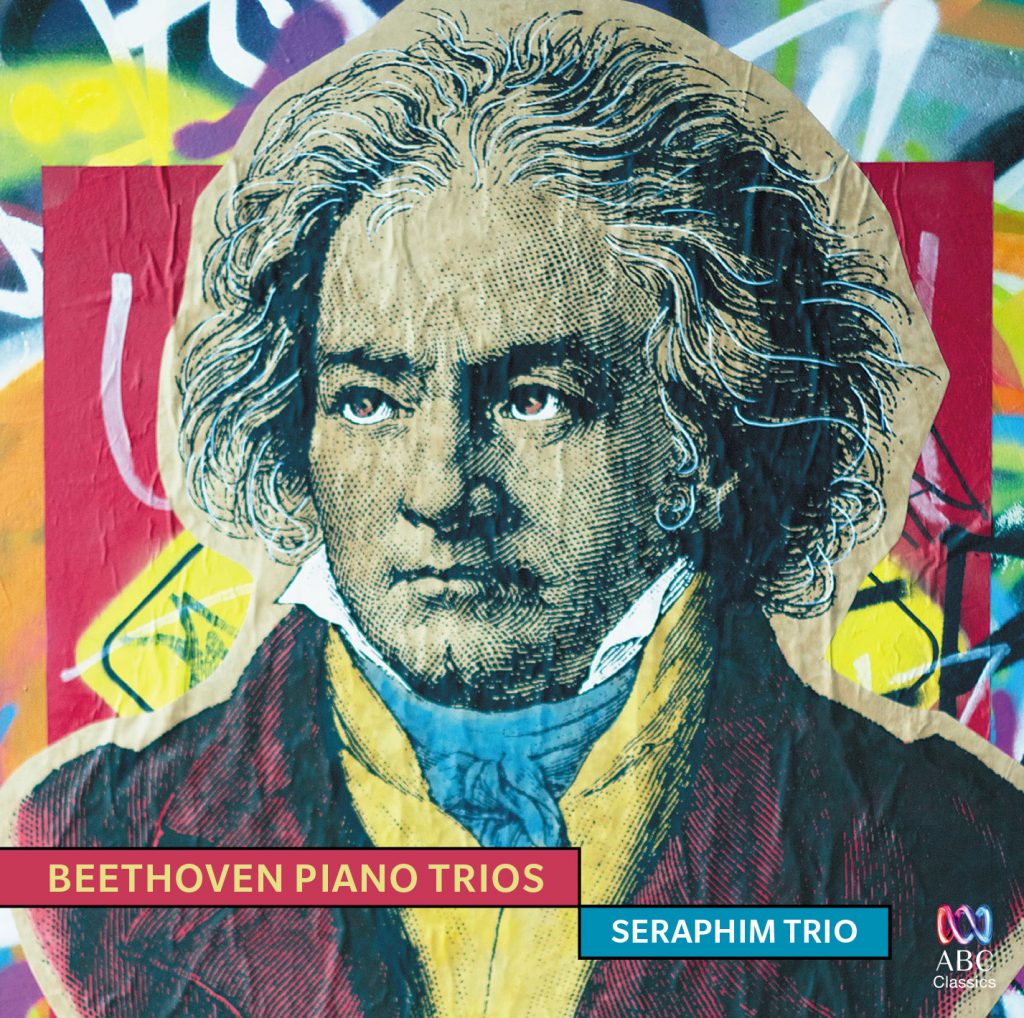
Beethoven Piano Trios
Seraphim Trio
Beethoven’s trios are amongst the finest works in the chamber canon, taking the form spawned by Mozart and Haydn and developing it into a musical genre which reached symphonic proportions in its musical language and virtuosity.
The album combines two early trios with the later ‘Ghost’, showcasing the radical development of Beethoven’s style. The opening trio, Op.1 No.2, was written in 1795, when Beethoven was just 23 years old, and shows the influence of both Haydn (in its wit and surprise) and Mozart (in its lyricism – particularly evident in the sublime slow movement).Written just two years later, the Op.11 trio earns its nickname ‘Gassenhauer’, or ‘street hit’, on account of its final movement, a delightful set of variations on Joseph Weigl’s song Pria ch’io l’impegno: ‘Before I go to work I must have something to eat.’
